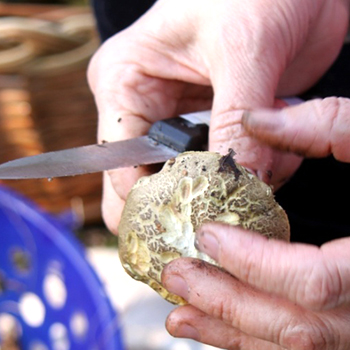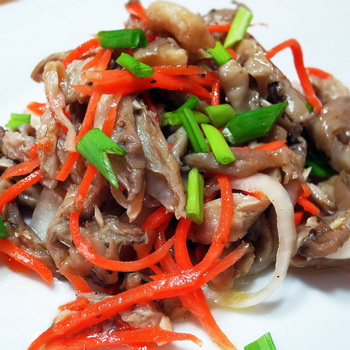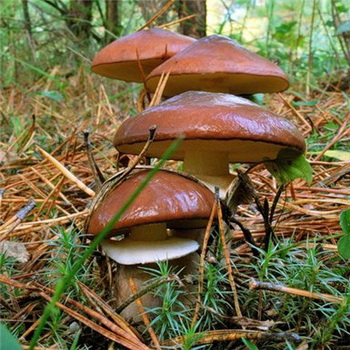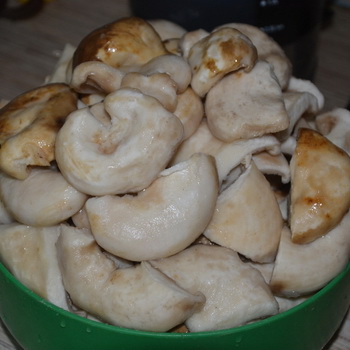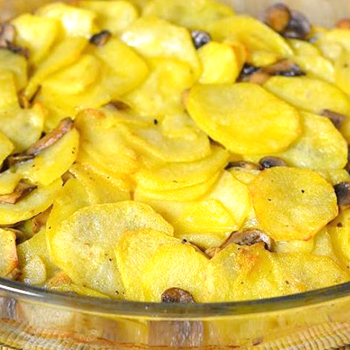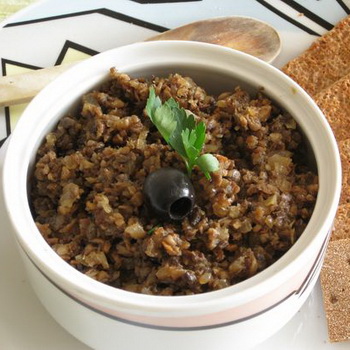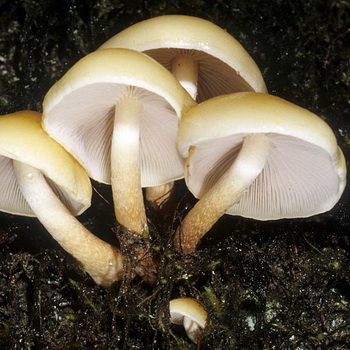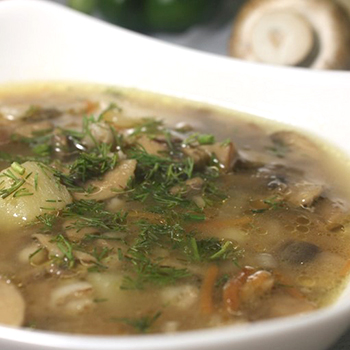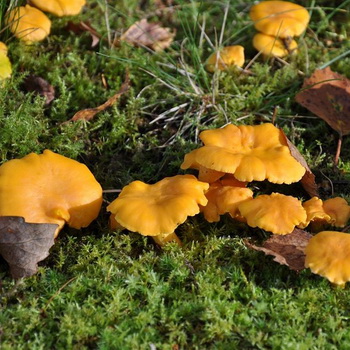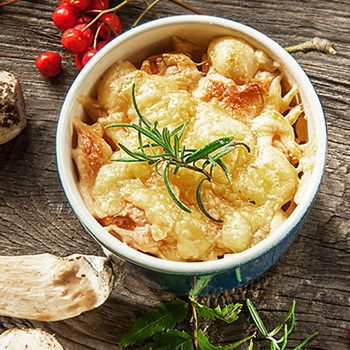Mushroom spruce, purple and pink: photos and descriptions of different types of mokruha
 The mokruha mushroom belongs to the fourth category of edible mushrooms, that is, it is suitable for consumption after preliminary boiling. It can be salted and pickled, and can also be used as an ingredient in sauces.
The mokruha mushroom belongs to the fourth category of edible mushrooms, that is, it is suitable for consumption after preliminary boiling. It can be salted and pickled, and can also be used as an ingredient in sauces.
In this article, you will be offered a photo and description of the most common types of mokruha mushroom: spruce, pink and purple. You can also familiarize yourself with the etymology of the name of the mushroom, find out where and when it grows, see a photo of the mokruha mushroom in its natural habitat.
Spruce mushroom and its photo
Category: edible.
Hat of spruce moss (Gomphidius glutinosus) (diameter 5-14 cm): grayish or gray-brown, may have dark spots and cast lilac or purple. Fleshy, in young mushrooms it has the shape of a hemisphere, which then changes to almost open, and sometimes slightly depressed. There is usually a small tubercle in the center. The skin is smooth and slimy to the touch, easily separated from the pulp.
Leg (height 4-13 cm): lemon yellow at the very base and grayish at the top. Often covered with scales and darkens with slight pressure.


Pay attention to the photo of spruce mokruha: The solid and massive cap in young mushrooms is slightly swollen, but over time it becomes cylindrical. As slippery and sticky as a hat. It is connected to it with a transparent mucous blanket, consisting of fibers. In mature mushrooms, it breaks, and its remnants form a mucous ring on the stem.


The plates are white or light gray, with age they become brown, and in old mushrooms they are completely black. Branched and thick, with a characteristic veil.


Pulp: white or pinkish, with age changes to gray and at the very base to yellowish. Has a sour taste and weak aroma.
For the first time the spruce moss mushroom was described by the famous German botanist, mycologist and entomologist Jacob Scheffer in 1774. He attributed this mushroom to the Champignon family (Agaricus) and named Agaricus Glutinosus, which means “molar tooth” in Greek. Another name that is still accepted at the present time, Gomphidius Glutinosus, was received by spruce moss in 1838 thanks to the works of the Swedish scientist Elias Fries.


Doubles: related edible moss are purple (Chroogomphus rutilus) and spotted (Gomphidius maculatus), and mushrooms with dark caps are similar to common boletus (Suillus luteus). But the pulp of the wet fur at the fracture turns reddened noticeably, and the boletus has no plates.
When it grows: from mid-August to early October in the northern regions of the Eurasian continent.


Where can I find: in mixed and coniferous forests, mainly near spruce and pine trees, often among moss and heather thickets. If you intend to pick different mushrooms, then, in order not to stain them with mucus, determine an isolated place for spruce moss.
Eating: in almost any form, subject to preliminary boiling and removal of the mucous skin from the cap. It is not very popular in Russia, but in Europe it is considered a very tasty mushroom. When pickling or salting, spruce moss darkens a lot. This property does not in the least affect their taste.
Application in traditional medicine (data not confirmed and not passed clinical trials!): in the form of a tincture as an effective antimicrobial agent.
Other names: moss sticky, slug.
Mokrukha purple and a photo of a mushroom
Category: edible.
Name purple moss (Chroogomphus rutilus) literally translated from Latin as "yellow-red", "golden-red". The color of this mokruha is not always purple. And the specific name appeared due to the fact that when exposed to high temperatures, the mushroom becomes exactly purple.
Hat (diameter 4-14 cm): shiny red-brown, brick-red or lilac; in old mushrooms, it usually strongly fades and loses its variegated color. Initially conical, with a central tubercle, over time becomes convex or almost prostrate. Has a brown cover, in a dark and damp place or after rain can be covered with a layer of sticky mucus. The edges are usually curved towards the inside.
Leg (height 4-10 cm): solid and curved, in the form of a cylinder. Usually the same color as the cap, a little sticky.


If you carefully look at the photo of the purple moss mushroom, you will notice that its arcuate plates are easily separated from the cap. Most often they are purple or purple. In old mushrooms, they become almost black.
Pulp: fleshy, fibrous in the lower part. A yellowish color at the site of the fracture and upon interaction with air changes to pink or red. Has no pronounced smell and taste.
Insect pests are especially fond of purple moss, so it is worth carefully examining the mushroom before putting it in the basket.
Doubles: five edible moss, namely felt (Chroogomphus tomentosus), spruce (Gomphidius glutinosus), Swiss (Chroogomphus helveticus), pink (Gomphidius roseus) and spotted (Gomphidius maculatus). The difference is that the felt cap has a whitish pubescence; spruce, as a rule, grows only next to spruce, and also has a more grayish-gray color; the Swiss cap is ocher and also with a slight felt pubescence. The pink moss has light plates and a bright pink cap, and the spotted one almost always grows under larch trees.
When it grows: from the beginning of August to the end of September in the countries of the Eurasian continent with a temperate climate. In Russia, mainly in European territory, less often in Siberia and the North Caucasus.
Where can I find: on calcareous soils of coniferous and deciduous forests, most often next to pine and birch.
Eating: in any form, provided that the mucous membrane is removed from the cap.
Application in traditional medicine: does not apply.
Other names: mucosa is mucous, glossy, yellow-legged, yellow-legged copper-red.
Mushroom pink moss and its photo
Category: edible.
Hat of pink moss (Gomphidius roseus) (diameter 3-6 cm): pale or gray pink, strongly discolored, especially in the center. Quite small with wavy edges.


As you can see in the photo of pink moss, the cap of a young mushroom is convex, but over time it becomes prostrate. Mucous to the touch.
Leg (height 2-5 cm): solid, cylindrical. With a slimy ring that becomes thinner and disappears as the fungus matures.
Plates: sparse, thick and covered with mucus. In young mushrooms, they are white, gradually changing color to gray or purple.


Pay attention to the photo of the pulp of the pink moss mushroom: at the base of the leg it has a pink tint, which explains the name of the species.
Doubles: absent.
When it grows: from late July to mid-September.
Where can I find: on moist soils of pine forests.
Eating: fresh, salted or pickled.
Application in traditional medicine: does not apply.

